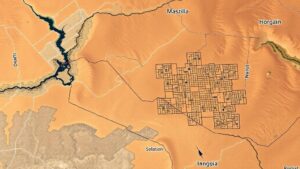Searching for hidden ceremonial cities of the Zapotec culture in the Oaxaca highlands.
Searching for Hidden Ceremonial Cities of the Zapotec Culture in the Oaxaca Highlands
The Oaxaca highlands of southern Mexico are a region rich in cultural heritage and archaeological significance. Among the many ancient civilizations that once thrived in this mountainous area, the Zapotecs stand out for their impressive ceremonial cities, particularly Monte Albán and Mitla. But, recent explorations have sparked interest in uncovering additional hidden ceremonial sites that may provide deeper insights into Zapotec society. This article delves into the search for these hidden cities, emphasizing their historical significance, archaeological methods, and the implications for understanding the Zapotec culture.
The Zapotec Civilization: An Overview
The Zapotec civilization emerged around 500 BCE and reached its peak between 200 CE and 900 CE. They were one of the first Mesoamerican cultures to develop urban centers, as seen in their remarkable city of Monte Albán, located approximately 6 miles southwest of present-day Oaxaca City.
- Urban Development: Monte Albán was characterized by its impressive architecture, including plazas, temples, and ball courts, designed to meet the spiritual and political needs of its inhabitants.
- Writing and Calendar Systems: The Zapotecs created one of the earliest writing systems in the Americas, aiding in the administration of their city-states and religious practices.
Despite the prominence of Monte Albán and Mitla, the Zapotec landscape likely consists of numerous lesser-known ceremonial sites that played critical roles in their religious and social life.
The Search for Hidden Ceremonial Cities
Archaeologists are increasingly employing advanced technologies such as LiDAR (Light Detection and Ranging) to uncover lost sites beneath dense vegetation. LiDAR helps reveal ground features that might otherwise remain hidden, allowing researchers to map out potential ceremonial cities in the rugged terrain of the Oaxaca highlands.
- Recent Discoveries: In 2018, a study using LiDAR technology surveyed areas around Monte Albán and identified new structures, including ceremonial platforms and platforms that suggest a complex urban layout.
- Field Investigations: Ground truthing these findings involves archaeology teams that visit the sites to excavate and analyze artifacts, like pottery and tools.
These techniques have led to the hypotheses of more than 30 unidentified ceremonial sites that may reveal intricate details about Zapotec culture, including their religious practices and social hierarchy.
The Importance of These Discoveries
The implications of finding additional ceremonial cities are profound. would enhance the historical narrative of the Zapotec civilization and provide clearer insights into their sociopolitical structures, trade systems, and spiritual beliefs.
- Cultural Significance: Each newly discovered city could provide new evidence about how the Zapotecs worshipped their deities and conducted rituals, which were central to their way of life.
- Global Context: Understanding the Zapotecs contributes to the broader narrative of Mesoamerican cultures, showcasing how diverse civilizations interacted with one another through trade and cultural exchange.
Real-world Applications
The search for hidden ceremonial cities is not only of academic interest; it has broader implications for local communities and tourism in Oaxaca. This endeavor could foster economic development by promoting archaeological tourism, which is increasingly important in regions rich in heritage.
Also, as discoveries are made, educational programs can be developed to engage the public, ensuring that the legacy of the Zapotec civilization is preserved for future generations.
Conclusion: Actionable Takeaways
The expedition to uncover hidden ceremonial cities of the Zapotec culture in the Oaxaca highlands is a compelling journey into the past. Recent advancements in technology like LiDAR are pivotal in revealing the rich tapestry of Zapotec urban life and spirituality. Whether through academic research or community involvement, the ongoing exploration serves as a reminder of the complexity of ancient civilizations and their enduring influence on modern culture.
As this important research progresses, those interested in Mesoamerican history are encouraged to stay informed about new findings and consider visiting the Oaxaca region to appreciate the profound heritage left by the Zapotec people.


